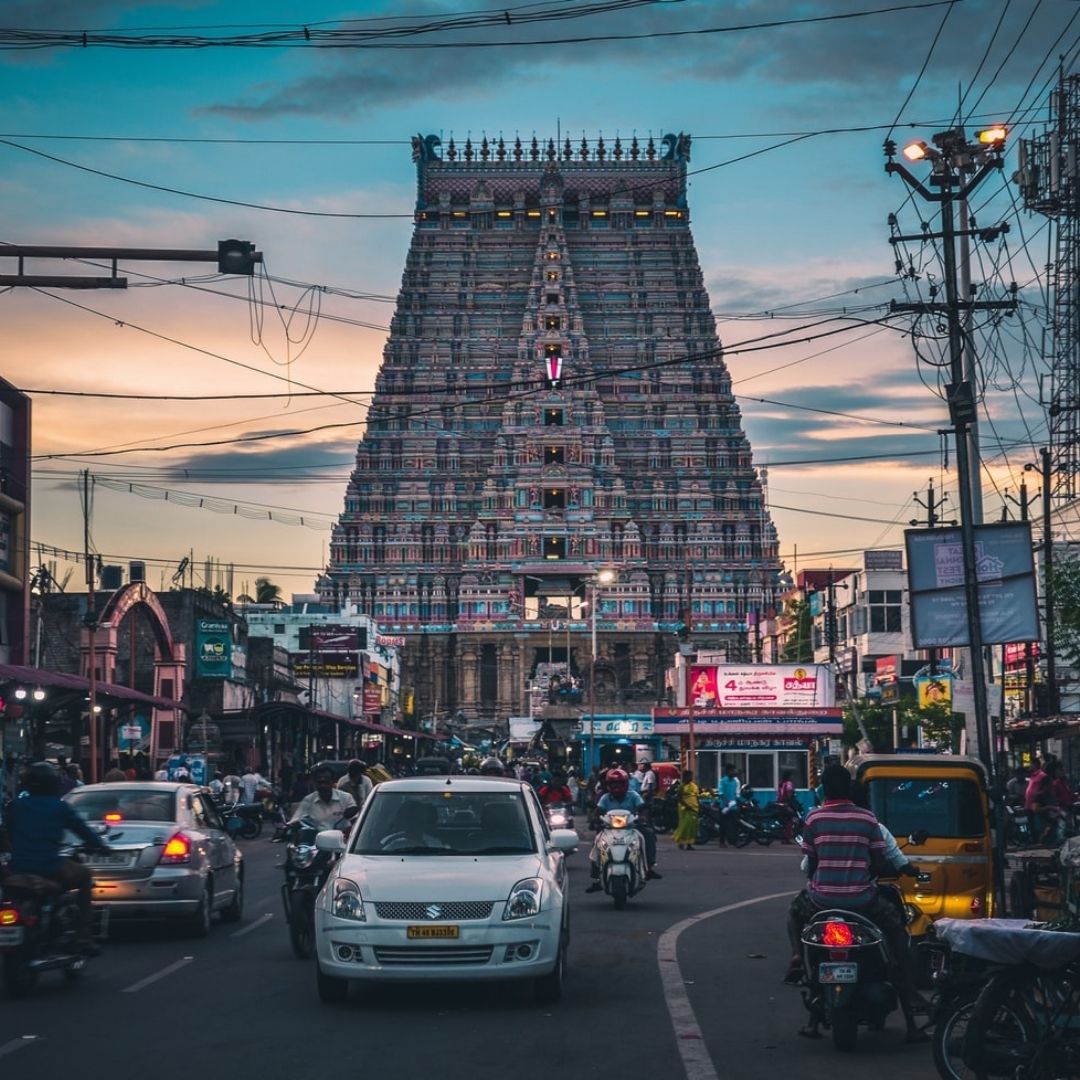
Image Credits: Unsplash
National Tourism Day: Looking At States That Boost India's Economy With Tourism
India, 25 Jan 2022 8:33 AM GMT
Editor : Snehadri Sarkar |
While he is a massive sports fanatic, his interest also lies in mainstream news and nitpicking trending and less talked about everyday issues.
Creatives : Tashafi Nazir
For most people, journalism sounds hectic and chaotic. For her, it's a passion she has been chasing for years. With an extensive media background, Tashafi believes in putting efforts on presenting a simple incident in the most interesting way.
In 2020, India's tourism sector accounted for 31.8 million jobs, which was 7.3 per cent of the total employment in the country. By 2029, it is expected to contribute to about 53 million jobs. The tourism sector is predicted to grow at an annual rate of 6.9 per cent to ₹32.05 lakh crore by 2028 (9.9% of GDP).
National Tourism Day is celebrated every year on January 25 to promote the importance of tourism for the country's economy. The Day is observed to cultivate awareness among the global community on the importance of tourism and its political, cultural, social and financial growth. This year, the theme of National Tourism Day is 'Rural and Community Centric Tourism'.
India has a rich culture of varied traditions, customs and festivals. The terrain, language and way of living change here every few kilometres.
It also gives a significant boost to the economy of the nation. According to statistics, over 7.7% of Indian employees work in the tourism industry.
However, the tourism industry has been hit drastically in the last two years due to the COVID-19 pandemic. The states which are highly dependent on tourism like Himachal Pradesh, Goa, and the North Eastern States suffered huge losses.
In 2020, India's tourism sector accounted for 31.8 million jobs, which was 7.3 per cent of the total employment in the country. By 2029, it is expected to contribute to about 53 million jobs. International Tourists arrival is expected to reach 30.5 billion by 2028. e-Visa facility was offered to 171 countries as of March 2021. The government introduced a scheme to boost the tourism sector by providing a one-month free tourist visa to 5 lakh tourists until March 31, 2022.
According to the World Travel and Tourism Council, tourism generated ₹16.91 lakh crore or 9.2 per cent of India's GDP in 2018 and supported 42.673 million jobs, 8.1 per cent of its total employment. The sector is predicted to grow at an annual rate of 6.9 per cent to ₹32.05 lakh crore by 2028 (9.9% of GDP).
Tamil Nadu
Tamil Nadu has the largest tourism industry in India, with a percentage share of 21.31 per cent and 21.86 per cent of domestic and foreign tourist visits in the country. As per the 2020 Ministry of Tourism report, the number of domestic arrivals was at 494.8 million, making it the second most popular tourist destination in India. Foreign arrivals numbered 6.86 million, the highest in the country, making it the most popular Indian state for tourism.
Tamil Nadu has over 4,000 years of continuous cultural history. The state has some of the most remarkable temple architecture in the country, and a living tradition of music, folk arts, dance and fine arts. It is also well renowned for its temple towns and heritage sites, hill stations, waterfalls, national parks, local cuisine, natural environment and wildlife.
Tamil Nadu with a GDP of $260 billion is the second-largest economy of the country, and tourism is one of the primary sources of its revenue. Tamil Nadu Tourism Development Corporation, headquartered in the capital city of Chennai, promotes tourism in the state mainly. The state is a year-round tourist destination, and the industry is the largest in the country.
Jammu & Kashmir
Jammu and Kashmir (J&K) is a Union Territory (UT) of India, located in the country's northern part and a global tourist destination. In addition to traditional recreational tourism, a vast scope exists for adventure, pilgrimage, spiritual, and health tourism.
The natural beauty and picturesque locations have made it a preferred destination for tourists worldwide. Jammu is famous for its temples, while Kashmir Valley is known for its lakes and gardens.
In 2019, foreign and domestic tourist arrivals stood at 57,920 and 16.16 million, respectively. In September 2020, Rs 1,350 crore (US$ 182.83 million) economic package was announced in Jammu Kashmir to boost tourism and the other sectors.
Goa
Goa is often known as the "Pearl of the Orient‟ and the "Beach Capital of India". Its natural beauty, unique heritage and delectable mix of cultures, along with friendly and hospitable people, make it perhaps the most attractive tourist destination in India.
Tourism is the backbone of the Goan economy, with 40 per cent of the population directly or indirectly dependent on it. The tourist mix is dominated by domestic tourists that comprise nearly 89 per cent of total tourist arrivals. The peak season of October to December sees almost half of the annual tourist arrivals, putting immense stress on Goa‟s ecology, infrastructure and tourism assets.
A new Goa tourism policy 2020 has been framed that offers a uniquely Goan experience to visitors by presenting a versatile concoction of historical, natural, ethnic, cultural locations and attractions.
To August 2020, Goa witnessed 876,358 domestic tourists and 282,022 foreign tourists arrivals. This was much lesser than the previous year due to the COVID-19 restrictions.
Rajasthan
The important revenue contributor of Rajasthan is Tourism and accounts for about 15 per cent of the state's economy. Rajasthan contributes nearly 11.2 per cent and 3.3 per cent share in India's foreign and domestic tourist arrivals respectively. The state government has brought down the luxury tax from 10 per cent to 8 per cent to boost its tourism industry.
The lakes of Udaipur, the palaces of Jaipur, desert forts of Jodhpur, Bikaner and Jaisalmer are among the most common destinations for tourists. Many old and neglected forts and palaces have been converted into heritage hotels. Tourism has increased employment in the hospitality sector.
A spin-off of tourism has been the growth of the handicrafts industry. Bassi and Molella villages in Chittorgarh and Rajasamand are famous for their wooden and clay handicraft items respectively. Blue pottery of Jaipur and ustta Kalan of Bikaner are also famous around the world. Jodhpur is one of the major handicraft hubs in the country, trading its handicrafts globally.
North East India
The eight states of North East India are blessed with scenic natural beauty, rich biodiversity, salubrious weather, rare wildlife, historical sites, distinct cultural and ethnic heritage and warm and welcoming residents. The region offers unforgettable visits for tourists interested in wildlife, cultural, religious and ethnic tourism, river cruises, golf among others. There is also great scope for trekking, mountaineering and adventure tourism in the region.
Northeast of India is home to many wildlife sanctuaries including Kaziranga National Park famous for the one-horned rhinoceros, Manas National Park, Orang, Nameri, Dibru Saikhowa in Assam, Balpakram in Meghalaya, Namdhapha in Arunachal Pradesh, Intanki in Nagaland, Keibul Namjao in Manipur, Khangchendzonga in Sikkim. The mighty Brahmaputra flows through Assam, where tourists can enjoy memorable river cruises and the flowing rivers of Arunachal Pradesh which feed the Brahmaputra offering incredible white water rafting experiences.
In 2017, Northeast India registered 77 lakh domestic tourists and 1.6 Lakh foreign tourists. Even if the foreign tourists are ignored, the conservative estimate of the market size ranges in the Rs 3,000-4,000 crore of revenue per annum.
Also Read: Meet Young Minds Who Received PM Rashtriya Bal Puraskar For Their Exceptional Achievements
 All section
All section














